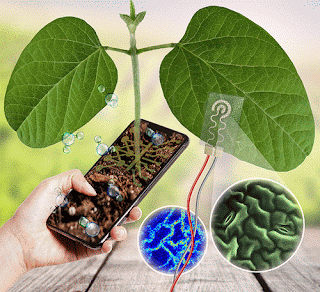Scientists Create a Wearable Sensor for Plant Leaves to Detect Water Loss Early
Plants can't speak up when they are thirsty. And visual signs, such as shriveling or browning leaves, don't start until it's too late. Metal electrodes have previously been used to monitor thirsty plants, but it's difficult attaching these devices to hairy leaves, which reduces their accuracy.
Now, researchers reporting in ACS Applied Materials & Interfaces have created a wearable sensor for leaves that stays put, and makes it easy to remotely manage plants' water stress.
Wearable devices for people are so sophisticated that some smart watches monitor the electrical activity of the wearer's heart, using electrodes that sit against the skin, and send the data to websites, which allow physicians to monitor and assess their patients from a distance.
Similarly, plant-wearable devices could help farmers and gardeners remotely monitor plant health, including leaf water content – a key marker of metabolism and drought stress.
Renato Lima and colleagues wanted to identify an electrode design that was reliable for long-term monitoring of plants' water stress, while also staying put. The researchers created two types of electrodes: one made of nickel deposited in a narrow, squiggly pattern, and the other cut from partially burnt paper that was coated with a waxy film.
When the team affixed the electrodes to soybean leaves with adhesive tape, the nickel-based electrodes performed better, producing larger signals as the leaves dried out.
And the metal electrodes adhered to the leaves more strongly than the ones made of burnt paper in windy conditions, likely because the thin squiggly design of the metallic film allowed more of the tape to connect with the leaf surface. Next, the researchers created a plant-wearable device with the metal electrodes and attached it to a living plant. The device wirelessly shared data to a smartphone app and website, and a simple, fast machine learning technique successfully converted these data to the percent of water content lost by the plant.
The researchers say that monitoring water content on leaves can indirectly provide information on exposure to pests and toxic agents. Because the plant-wearable device provides reliable data indoors, the team now plans to test the devices in outdoor gardens and crops to determine when plants need to be watered, potentially increasing yields.



Comments
Post a Comment